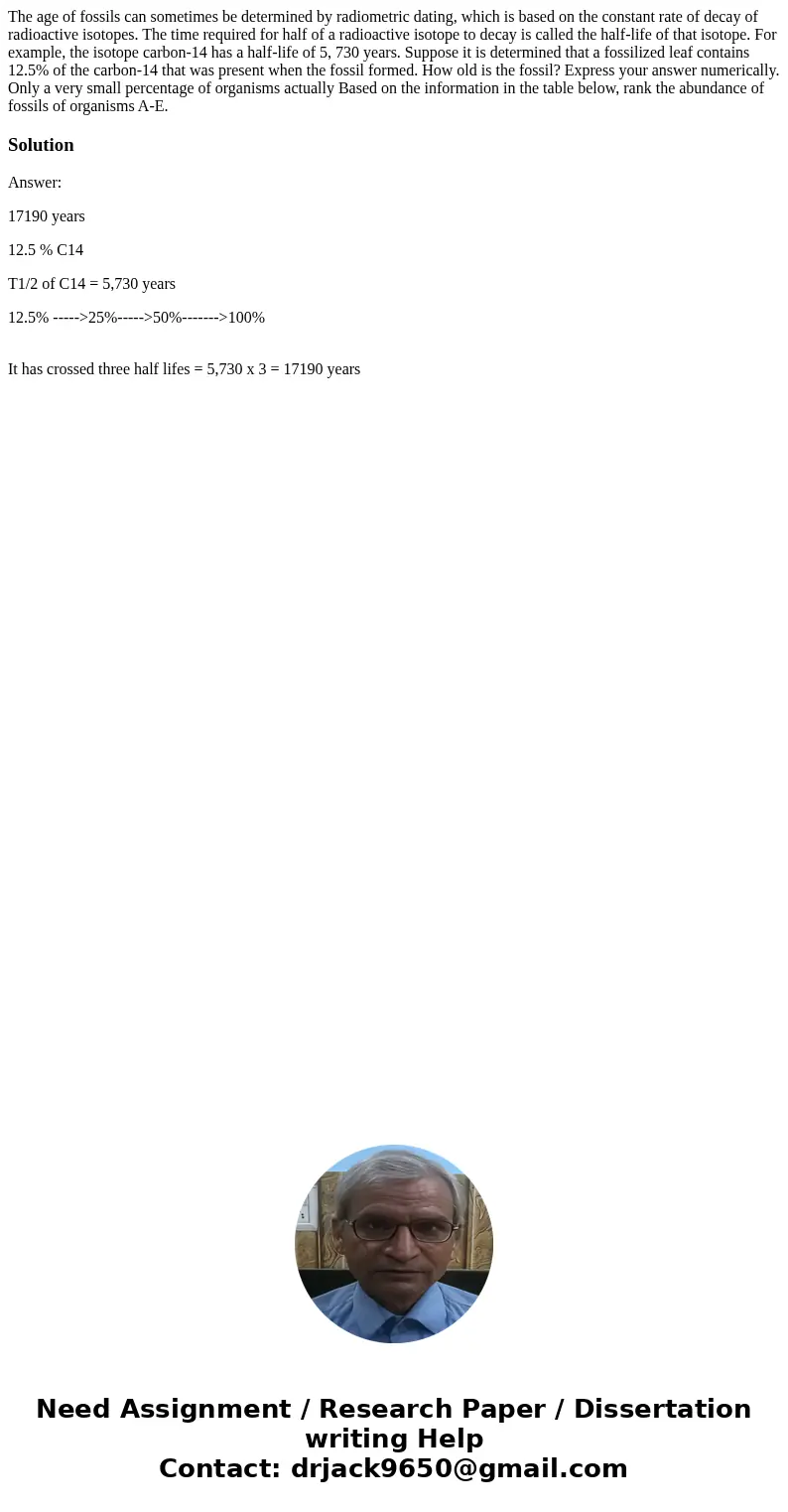The age of fossils can sometimes be determined by radiometri
The age of fossils can sometimes be determined by radiometric dating, which is based on the constant rate of decay of radioactive isotopes. The time required for half of a radioactive isotope to decay is called the half-life of that isotope. For example, the isotope carbon-14 has a half-life of 5, 730 years. Suppose it is determined that a fossilized leaf contains 12.5% of the carbon-14 that was present when the fossil formed. How old is the fossil? Express your answer numerically. Only a very small percentage of organisms actually Based on the information in the table below, rank the abundance of fossils of organisms A-E. 
Solution
Answer:
17190 years
12.5 % C14
T1/2 of C14 = 5,730 years
12.5% ----->25%----->50%------->100%
It has crossed three half lifes = 5,730 x 3 = 17190 years

 Homework Sourse
Homework Sourse